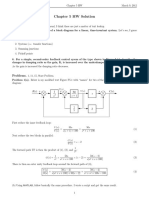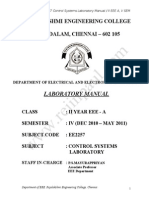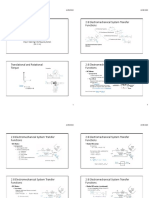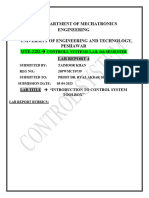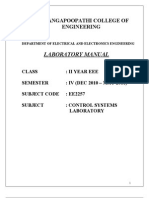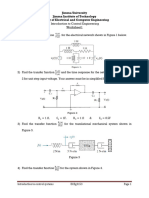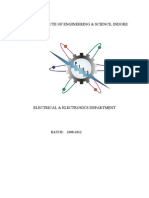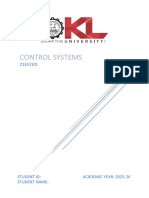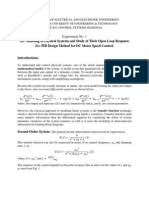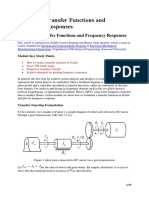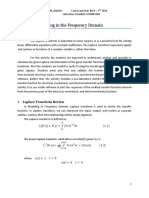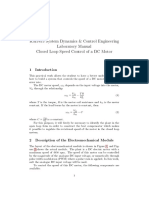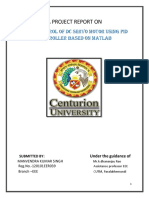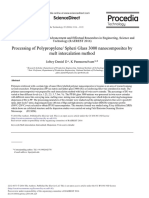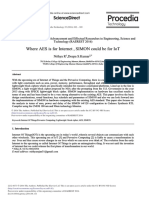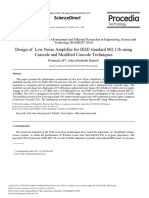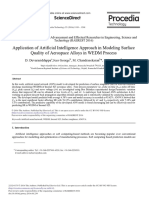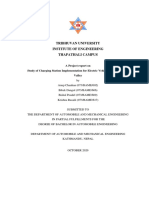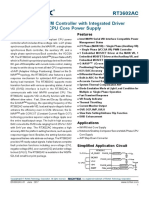0% found this document useful (0 votes)
168 views27 pagesMotor Control for Engineers
The document discusses motor control using a microprocessor. It describes how to:
1) Convert discrete signals from the CPU to analog voltages using a D/A converter or pulse width modulation to drive an amplifier.
2) Amplify the analog signal using a power supply and amplifier to provide voltage, current, or pulse signals to control a motor.
3) Control motors by regulating electrical signals like voltage and current, or mechanical signals like torque, speed, and position, using feedback from sensors.
Uploaded by
TanNguyễnCopyright
© © All Rights Reserved
We take content rights seriously. If you suspect this is your content, claim it here.
Available Formats
Download as PDF, TXT or read online on Scribd
0% found this document useful (0 votes)
168 views27 pagesMotor Control for Engineers
The document discusses motor control using a microprocessor. It describes how to:
1) Convert discrete signals from the CPU to analog voltages using a D/A converter or pulse width modulation to drive an amplifier.
2) Amplify the analog signal using a power supply and amplifier to provide voltage, current, or pulse signals to control a motor.
3) Control motors by regulating electrical signals like voltage and current, or mechanical signals like torque, speed, and position, using feedback from sensors.
Uploaded by
TanNguyễnCopyright
© © All Rights Reserved
We take content rights seriously. If you suspect this is your content, claim it here.
Available Formats
Download as PDF, TXT or read online on Scribd
/ 27






